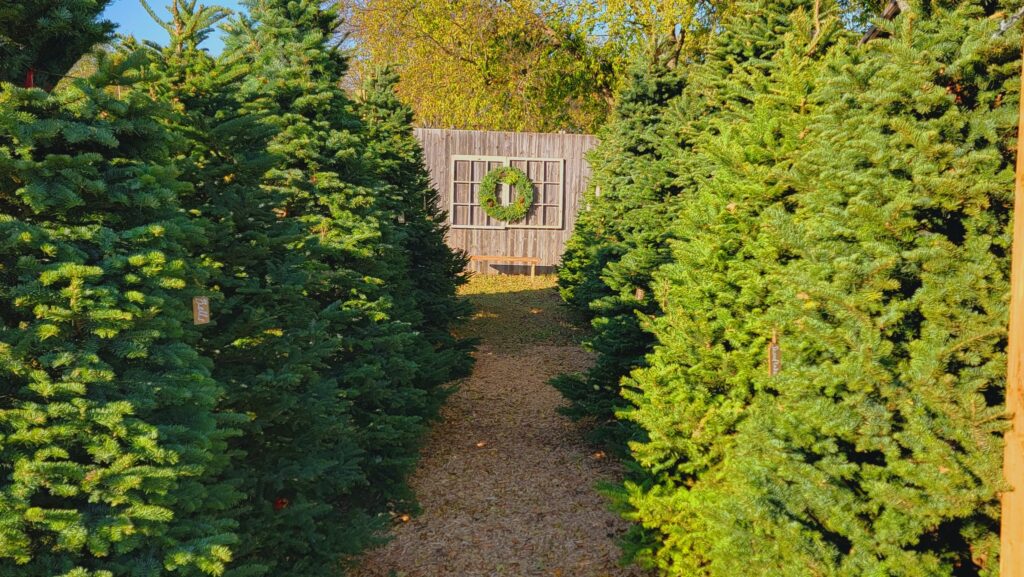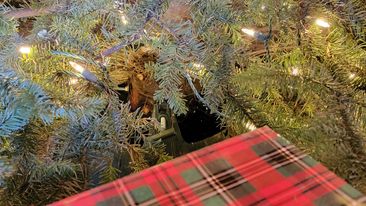Why a Fresh-cut Christmas Tree Might be the Healthiest Choice for your Family AND the Planet!
Real Vs Fake: Digging into the Great Christmas Tree Debate
Why Pick a Real Tree?
Most folks gravitate towards a fresh-cut Christmas tree for two reasons, smell and nostalgia. While artificial “trees” have taken root in living spaces in recent decades, they still haven’t perfected the memory-filled family experience of making the trip to pick out the perfect tree!
When you buy a real tree, you aren’t simply buying the tree itself, but maybe more importantly, the time spent with loved ones– searching for the best size and shape to fit your specific preferences and needs. Posing for a picture, watching the tree get bundled up, and loaded onto your car brings back memories of Christmases past… warming the heart like each cup of hot chocolate enjoyed at the tree lot!
And that smell! While (some) tree scented candles, oils and room sprays are reminiscent, we haven’t found one yet, that truly bottles up that intoxicating essence of a real tree!
Supporting American Farmers
One of the biggest misconceptions associated with fresh-cut Christmas trees is that national lampoon image of someone chopping down a tree from a native forest. And that picture couldn’t be further from the truth!
Almost all real Christmas trees are farmed like many other agricultural crops! Instead of rows of apples or tomatoes, native conifer trees are planted in rows, all the while sequestering carbon, reducing erosion, and providing habitat for wildlife—up until the time they are harvested. When one is removed, another tree is planted, and the sustainable cycle continues to grow… season after season.

Real Trees: The More Sustainable/Green Option
Most every city in North Texas has a recycling program which accepts real Christmas trees at the end of the season. These are typically chipped up and made available as mulch or compost, eventually cycling nutrients back into the soil, while at the same time helping reduce weed pressure, also helping hold soil moisture in the surrounding area in which they are used!
Artificial Trees: The Dirty Secret
Many folks incorrectly assume artificial trees are sustainable because they can be used year after year. Good-intentioned consumers envision they are preventing forest trees from being cut down– but we’ve already established, this simply isn’t true. In fact, you might be surprised to find that although people intend to use artificial trees season after season, most get thrown away in as little as 5-7 years! And unlike real trees, artificial trees CANNOT be recycled. The vast majority end up in landfills, along with the fossil fuel-based plastics, and metals used to create them!
Most artificial trees are manufactured with a combination of two potentially problematic components: PVC (a petroleum-based plastic), and lead .(used to stabilize and extend the “life” of the artificial leaves) The lead in these faux needles breaks down into lead dust, which is unfortunately released into the air—toxic to everyone, but especially children younger than six.
Real Trees: But I’m Allergic!
According to the American College of Allergy, Asthma and Immunology, Christmas tree (fir, spruce and pine trees) allergies are fairly uncommon. In reality, it’s more likely that your allergy symptoms stem from the tiny mold spores, dust. (or even potentially residual pollen housed on the tree)
Your Christmas Tree is NOT Actively Producing Pollen
Another common misconception is that tree pollen is the major trigger for Christmas tree related allergies. But the conifer trees mentioned above produce pollen in the spring, (not winter) so a related pollen allergy would only be problematic then.
Also, most Christmas tree species pollen itself isn’t a major cause of allergies– when compared with other tree pollen. Their pollen is much larger and heavier than other tree pollen, causing it to fall to the ground. It usually doesn’t even stay in the air. So, it’s extremely unlikely that someone would breathe it in, triggering their allergies or asthma. However, (rarely) other tree, grass, or weed pollen may be the culprit when they stick to the tree itself. The easiest preventative is to spray down a fresh cut tree with water to reduce residual pollen or mold spores, BEFORE breaking your tree into the house.
Artificial Trees Can Contribute to REAL Allergies
For those allergic to mold and dust, artificial Christmas trees, decorations and lights might even be MORE of an allergy trigger. These holiday decorations are typically stored in attics, garages and crawlspaces—areas especially prone to dust and mold! Because of these storage conditions, artificial trees may be the culprit, triggering allergy symptoms such as coughing, wheezing, a runny or stuffy nose, itchy or watery eyes. And, unfortunately because these “trees” are pre-lit, rinsing them off might be problematic and prohibitive.
But I Hate the Messy Needles!
It’s true that fresh-cut trees will eventually begin to drop needles in an attempt to conserve moisture throughout the holiday season. But the good news is there are steps you can take to reduce needle drop on real trees! (Artificial trees can also lose a significant amount of needles which should be vacuumed up to reduce the contamination potential mentioned above.)
- Select the RIGHT tree. Noble Firs are generally regarded as THE BEST tree for needle retention. (In addition to soft needles, strong branches, intense Christmas scent) Whatever species you choose, pick a tree that has plenty of deep green healthy needles and one that hasn’t been allowed to dry out.
- After bringing home, make a fresh cut (removing the bottom 1” of the tree) and immediately put in stand full of water. (They can take up 1-2 gallons of water in the first day!)
- Refill the next day and check the water level every other day, filling with water as needed **NEVER EVER let your real tree dry out below the bottom cut!
- Use room temperature tap water to refill. No bleach, sugar, additives, or nutrients are needed. In fact, there is no statistical evidence that any Christmas tree additives actually work. (Although they probably won’t hurt) Your fresh cut tree can Last 6 weeks (or longer!) indoors– as long as it doesn’t dry out!

Real or Fake: The Debate Continues
All that said, there will continue to be homes divided (by their tree preferences) 😉 this holiday season. You might have guessed as plant-lovers we are certainly partial to REAL plants. But we understand that some folks just enjoy the convenience of setting up an artificial tree– and of course that is understandable! If you do prefer an artificial tree (at least for now) there might still be room for a little compromise, branching out with a fresh cut wreath or natural garland! We have several sizes in stock (in addition to our Christmas trees) and will also be teaching natural wreath-making classes in the coming weeks! And if YOU still live in a house-divided (Real vs Fake Tree), be sure to remember the reason for the season. The spirit of the holidays is in the togetherness of family and friends—embracing the spirit of giving, hope, good cheer, love, understanding, and goodwill towards all!